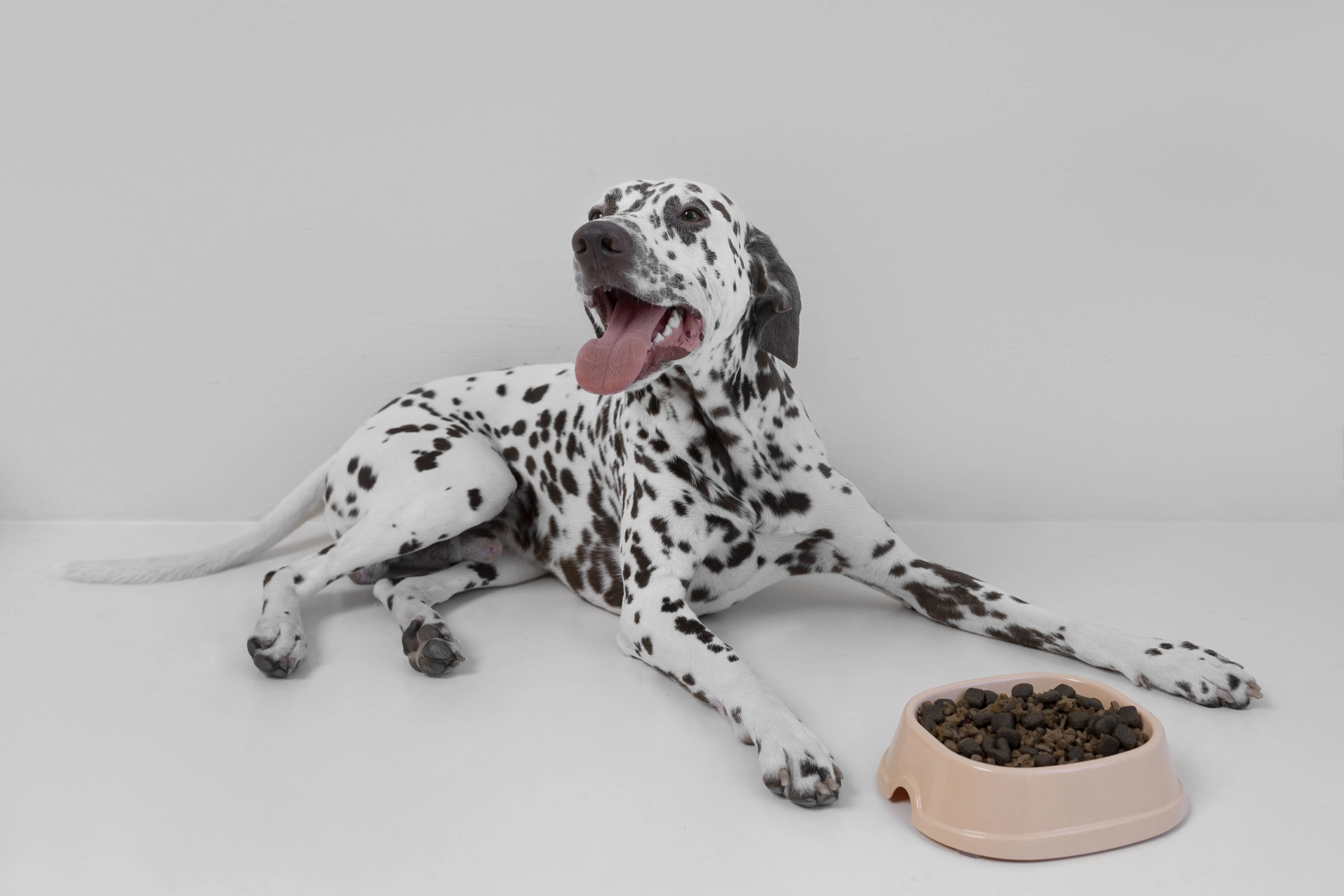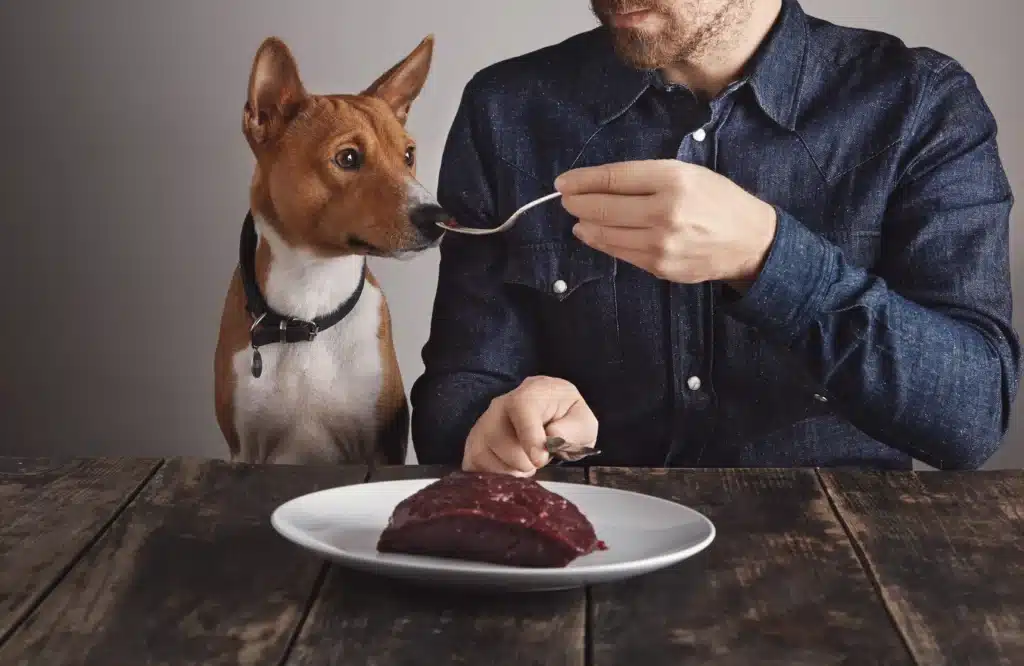Large size, floppy ears, and endless energy, huge breed puppies are the happiest. There is a problem, however, with feeding them such nutrition. Eating the wrong diet will result in joint disease, bone issues and obesity which will reduce their lifespan. The 2022 Survey on the Obesity Prevalence in Pets reported 59% of dogs and 61% of cats as being overweight or obese, which increased to 56% of dogs (2017 to 2018) and 60% of cats (Pet Obesity Prevention, 2022).
This is why finding the most appropriate food to the growing breed puppies is not only a matter of filling the bowl but a lifetime investment in health. This manual outlines all the details such as protein quality and caloric ratios, as well as feeding timetables and developmental control.
Why Large-Breed Puppy Food Matters
Big breed dogs (Labradors, German shepherds, great dane, mastiffs etc) are heavier and grow faster than small breeds. The evidence-based guidelines indicate that the closure of the growth plate is at 6-8 months in the toy/small breed, 8-12 months in the medium breed, and 14-18 months in the large/giant breed (Sit Stay Squat, 2025).
Feeding them on regular puppy food may overload them with calories or calcium and result in:

- Hip and Elbow Dysplasia: aggravated by excessive growth weight.
- Panosteitis (growing pains): inflammation of long bones.
- Bloat/ GD V: increased risk in deep-chested breeds.
- Obesity & shortened life span: Obesity has a direct influence on longevity.
- Priority objective: Advance gradual, regulated development with equalizing nutrition- not at a rapid pace weight growth.
What to Look for in Large-Breed Puppy Food
Protein Quality
- Look for named animal proteins (chicken, salmon, lamb, turkey).
- Minimum 25–30% protein (dry matter basis).
- Avoid generic “meat by-products” as the primary ingredient.
Controlled Calories & Fat
- Large-breed puppy formulas prevent excess weight.
- Fat content: ~8–12% (DM).
- Calories balanced for slow, steady growth.
Calcium & Phosphorus Balance
- This is the biggest difference from standard puppy food.
- Calcium: 1.2–1.8% DM (AAFCO Growth Profile).
- Ca:P ratio: 1:1 to 1.8:1.
DHA & Omega-3 Fatty Acids
- DHA supports brain & vision development.
- Omega-3s reduce inflammation and joint stress.
- Sources: fish oil, salmon, flaxseed.
Added Joint Support (Optional)
- Glucosamine and chondroitin are a bonus in premium foods.
- Not a replacement for balanced nutrition but can help protect developing joints.
Verified Standards
Choose food that:
- Meets AAFCO Growth requirements (for large breeds).
- Follows WSAVA Global Nutrition Guidelines.
- Lists an AAFCO adequacy statement: “Complete & Balanced for Growth including Large-Size Dogs (70 lb or more as an adult).
Large-Breed Puppy Feeding Guidelines
- Frequency: 3-4 meals a day up to 6 months, and 2 meals a day thereafter (DevAccount and DevAccount, 2022).
- Portions: Adjust for Body Condition Score (BCS 45/9), follow package chart.
- Growth Monitoring: Monthly weights; bone growth check in vets.
- Snacks: Restrict snacks to less than 10 percent of daily calories.
Best Large Breed Puppy Foods
| Brand | Key Benefits | Best For |
| Hill’s Science Diet Large Breed Puppy | DHA (fish oil), regulated calcium, vet-developed | Families wanting research-backed, widely available food |
| Royal Canin Large Puppy | Breed-based formula, easy-to-digest prebiotics, small kibble | Puppies with sensitive stomachs |
| Purina Pro Plan Large Breed Puppy | Affordable, chicken-first, DHA & glucosamine | Cost-conscious families who want quality |
| Blue Buffalo Life Protection Large Breed Puppy | Natural ingredients, antioxidants, no artificial preservatives | Owners preferring holistic diets |
| Orijen Large Breed Puppy (Grain-Free) | 85% animal protein, fresh local ingredients | Highly active puppies needing high protein |
Common Feeding Mistakes to Avoid
- Eating puppy food rather than large breed formula.
- Self-prescription of calcium supplements.
- Free-feed (never allowing the bowl to become empty).
- Excessive change of foods (leads to digestive discomfort)
- When it comes to training treats, it is better to disregard calories.
Timing to Switch to Adult Dog Food
Timing to switch from puppy to adult food is very crucial for your pet health. Switching early causes problems like growth while late transition causes many health issues like obesity.
- Big breed dogs: 12–18 months
- Giant breed dogs: 18–24 months
- Signs that it’s time: slowed growth, close to adult size, and your veterinarian telling you it is time.
- Be sure to transition the food over a period of 7–10 days to avoid potential diarrhea.
Final Thoughts
The best puppy food for large breed dogs, as you now know, is not the most expensive or fancy bag (although high-quality food often costs a bit more). It comes down to supporting slow, sustained growth, monitoring joint growth, and sodium-balanced food.
Look for:
- High-quality animal protein
- Limited calories and fat
- Balanced calcium-phosphorus ratio
- DHA & Omega-3s
Coupled with portion control, tracking their growth visually, and monitoring their overall health at the vets regularly, you will end up raising a robust, healthy giant to live into their adult years.


